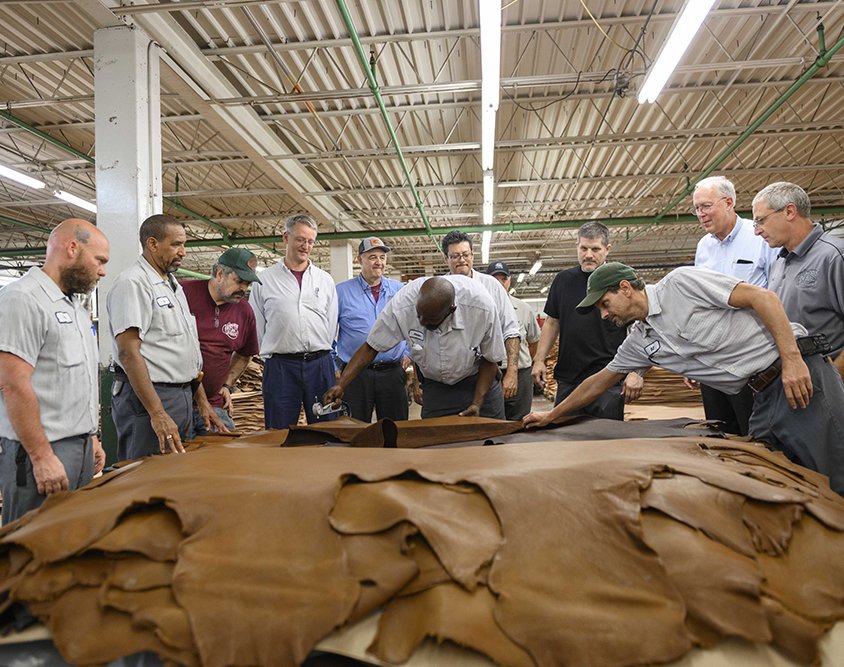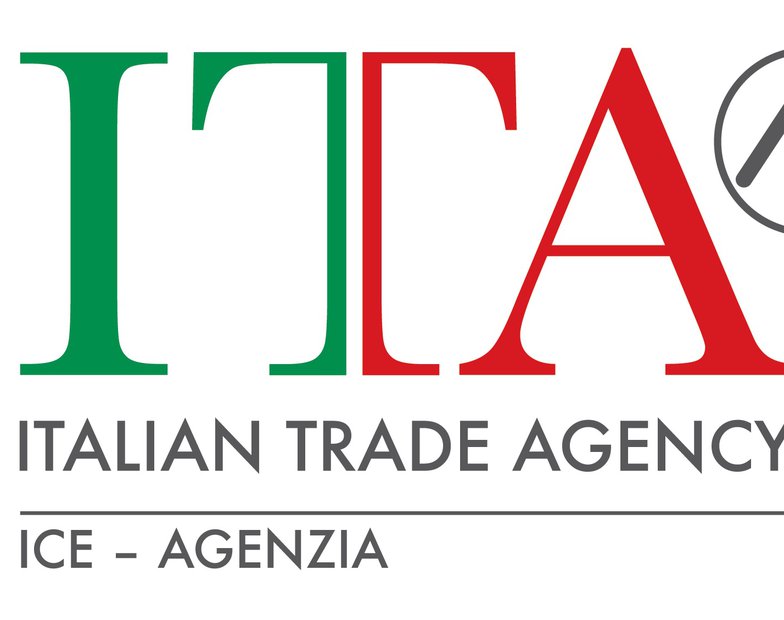The question is: if leather is expelled from the fashion ecosystem, what will come next? Some fashion-brands certifications for sustainability-initiatives distract from true environmental impact. The need to standardize and measure sustainability in a unique way for all remains current. In support of universal standards for measuring impacts is the fact that navigating fashion’s oft-greenwashed landscape is complicated but the desire to buy better is alive and well. To hinder universal certifications there is the political and economic context. Certification schemes, all these brand-based ways of communicating impact trivialize the realities of the fashion supply chain: we need to recreate the future simply by starting to measure the reduction in energy and water used
Leather will never be an animal-friendly product: It is made of dead animal skin. However, the skin used to make leather comes from animals raised for their meat. In that sense, it uses a byproduct from another industry, so it doesn’t actually need additional land and resources.
In essence, the attraction of fake leather was ending the connection with slaughtering animals, but now the goal is sustainability and the circular economy. This means abandoning the plastics that go into many fake leathers, and connecting with sustainable resource streams. Start-ups have been quick to pounce on this opportunity. Their solutions range from animal cell cultures that grow tissues similar to skin, to materials produced by bacteria, fungi or plants.
These solutions attracted a lot of interest and encouragement, but doubts began to creep in about their feasibility. The balance between making a durable and biodegradable material is proving difficult to achieve. For example, using nanofibers to make a leather-like material, or any fabric that needs to be cheap, is a bit like fishing with dynamite. That's too much. Nanofibers are high-tech materials and cannot be devalued to be really applied in volume in everyday fashion.
Fashion brands are better at marketing environmental initiatives than at implementing them. For example, the reflow of plastic leather as "vegan leather" has allowed some retailers to present their products as environmentally friendly, even though the material is made from fossil fuels.
Many retailers rely on the Higg Index, a highly influential rating system that measures the sustainability of materials. But critics say the index contributes to greenwashing by portraying synthetic materials as more sustainable than natural fibers.
- The question is: if leather is expelled from the fashion ecosystem, what will come next?
At the current stage, there is room for everyone. In the short term, clients want a substitute that looks and feels like leather, but it is also certainly easier to satisfy the appetite for sustainable materials by still using leather.
Conventional leather is heavily criticized for the environmental impact of the tanning process. But leather can also be eco-friendly.
The leather industry may be highly regulated industry with responsible value chain partners manufacturing leather under auditing programs that are supportive to raise the standard of modern leather manufacturing.
Lots of brands increasingly source leather from leather manufacturers audited according to these standards and increasingly demand them to use chemicals that are certified according to the ZDHC levels. The growing importance of these standards is crucial for the leather industry to ensure that brands, designers and consumers value leather as a sustainable and unique material.
The goals are clear and it is not a question of changing one material for another. Of course, it can be done for reasons of economy or style, or philosophical, to mark the distance with the exploitation of animals, but the priorities are different. The fashion industry must quickly focus on decarbonization, circular economy and better working conditions for the people employed in the sector. On the path to achieving these goals, however, there is still a lot of slowness and confusion. 70 percent of fashion emissions reach the supply chain. From the production and processing of the first semi-finished products. That's where we need to act, but instead of working on traceability and transparency, an ambiguous diatribe has begun about the materials preferred by brands to be considered eco-friendly. Except to discover then, that the materials that are claimed to have a more sustainable environmental and social impact than leather, come from waste from the hydrocarbon supply chain, such as plastic bottles, or are resource-intensive for cultivation, such as cotton and wool.
- Some fashion-brands certifications for sustainability-initiatives distract from true environmental impact
Governments are beginning to investigate and reject misleading labeling. This could force retailers and manufacturers to implement real change or, at the very least, make consumers more aware of greenwashing.
Lo Higg Materials Sustainability Index (Higg MSI) has come under fire for alleged “greenwashing.” The accusation, leveled by the New York Times. is that the fabric ranking system created by the Sustainable Apparel Coalition (SAC) favors man-made synthetic fibers over natural ones.
In addition, the Norwegian Consumer Authority ordered outdoor apparel brand Norrøna to stop using “misleading” Higg data in its marketing, the authority said. In late June, the SAC said it was temporarily pausing the MSI.
The New York Times alleged that Higg data was outdated and funded by the synthetics industry. The Norwegian Consumer Authority charged that the Higg MSI data was “likely to be false and untruthful.”
- The need to standardize and measure sustainability in a unique way for all remains current
In the controversy surrounding the Higg Materials Sustainability Index (MSI), Kim Van Der Weerd, intelligence director at the Transformers Foundation, believes many are missing the point. This can be read in the beginning of the article “Hot Take on Higg MSI Controversy: ‘We Risk Missing the Elephant in the Room’”. In a post on the Transformers Foundation website, Van Der Weerd penned an op-ed, “The Higg Data Debate: No Room for Context, Imagination or Co-Creation,” questioning whether the data debate is really the most important one the industry should be having when it comes to the material used in manufacturing apparel and footwear.
Van Der Weerd agreed that “data can and should be debated,” but added that “data is just information expressed as a number, and numbers are just values representing a quantity. In other words: the meaning of data is derived from context; it’s not intrinsic.”
She cited a quote from a 2021 report on cotton misinformation by Transformers Foundation, in which co-authors Marzia Lanfranchi and Elizabeth Cline wrote: “Part of what pulls us toward data and statistics is that they’re closely linked to our ideas of objectivity and truth, as we tend to assume that data transcends all human relations and stands alone with no outside influences.”
Van Der Weerd wrote that her point wasn’t that numbers aren’t useful, but that numbers, to be useful, require context.
- In support of universal standards for measuring impacts is the fact that navigating fashion’s oft-greenwashed landscape is complicated for most consumers but the desire to buy better is alive and well.
A new study by IFM-Première Vision Chair, a research partnership between Institut Français de la Mode (IFM) and the trade show organizer (Report: materials motivate consumers to make responsible purchases – SJ), found the 90.5 percent of the 6,000 respondents it surveyed in France, Italy, Germany, the U.K. and U.S. intend to change the way they buy clothes. They just need to be better educated about why and what to buy alternatively.
While sustainable fashion is a steadily growing portion of clothing purchases, the survey illustrates a “great need for clarification on materials and production methods that are still poorly identified.”
- To hinder objective universal certifications there is the political and economic context:
- The transition to carbon neutrality is, as the name implies, a gradual process. And not necessarily linear, as it is influenced by numerous variables. Some notes: the multiplicity of the subjects involved, the heterogeneity of the social and productive apparatuses, the different financial and technological capacities of the States. Other imponderables: an epidemic that causes collapses and then surges in energy and raw materials demand; conflicts that subvert the supplies. To these must be added the same climate change, to combat which the transition is conceived. Variable known in principle, but poorly predictable in its punctual manifestations: a drought and extreme weather events that damage generation and distribution infrastructures.
- There is no transition without its sustainability. Not only ecological, but also political-economic-social. Because an excessively onerous transition (perceived as) ends up being rejected by public opinion, with exhilarating results. This implies that, without prejudice to the underlying objective (decarbonization) for all – at best – each State will tend to take the path that best suits its initial situation, favoring specific transitional solutions.
- The climate emergency is there for all to see. In addition to being a scientific fact, it is now empirical evidence, tangible for everyone. But the answers, starting with the modification of the way of feeding our industrial civilization – raise your hand if you really believe that giving up it is a viable and desirable solution – have a geopolitical-strategic dimension no less binding than the scientific-ecological one. Recognizing this must not be an alibi, but an antidote to ideological approaches that risk leaving the time (and climate) they find.
- Certification schemes, all these brand-based ways of communicating impact trivialize the realities of the fashion supply chain: we need to recreate the future simply by starting to measure the reduction in energy and water used
"Universal, aggregated claims about the social or environmental impact of a garment, by definition, will remove the data from the context that gave it meaning in the first place," Van Der Weerd wrote in the Sourcing Journal. “Regardless of which data we use, or how credible it is, an aggregate or universal claim is likely to be greenwashing”.
In other words, while debating the numbers themselves is worthwhile, the more fundamental question should be “why is it difficult for brands and retailers to communicate data with context?” She noted that brands and retailers often claim that when production is done by so many actors in so many countries, context-specific claims are difficult to assess.
“Deferring to scale and complexity misses the more fundamental point–long, complex and unwieldy supply chains are a choice, not an inherent state of play,” she wrote. “Most brands and retailers have chosen to be footloose…because all the things that would tie them to a specific place, context and business partner…are too risky. Instead, they’ve opted to minimize financial risk for themselves by offloading it onto their supply chains. Suppliers, in turn, tend to cope with this by further offloading that risk (for example, through subcontracting, outsourcing, and short-term contracts) until, ultimately, it lands with the most vulnerable. One result: supply chains get longer and more complex.”
The crux of this debate is not the data itself, according to Van Der Weerd, but that, on the one hand, most brands and retailers chose to give up the knowledge they would have needed to make meaningful claims about their sustainability impact because it was better for their books and their shareholders. On the other hand, those same brands and retailers sought to leverage their so-called “sustainability chops” as a market differentiator, Van Der Weerd wrote.
“These two things are fundamentally in conflict with one another,” she wrote. “The Higg controversy is just one example of how brands and retailers have tried to square this circle. Cue the accusations of greenwashing.”
Maybe instead of debating which aggregate universal figures can be most credibly presented to the public or advocating for better data to support different aggregate claims, “we should be talking about how to reduce the breadth, depth and complexity of fashion supply chains so that it’s possible for brands and retailers to regain their understanding of how and where their clothes are produced,” Van Der Weerd wrote.
We must start to put everyone on an equal footing, from suppliers of raw materials to producers on behalf of third parties, to logistics to retailers, reducing the amounts of impacts especially in terms of energy and water, including here, of course, also the energy and water wasted in waste disposal.



